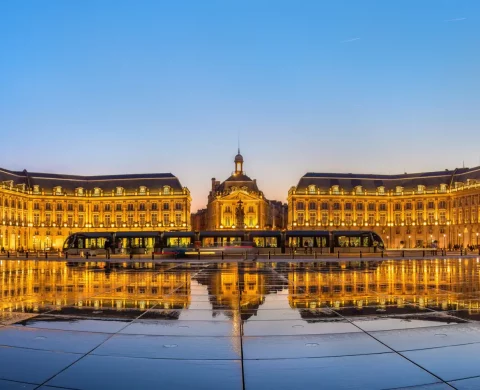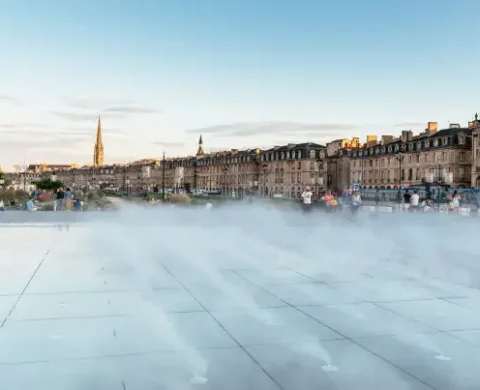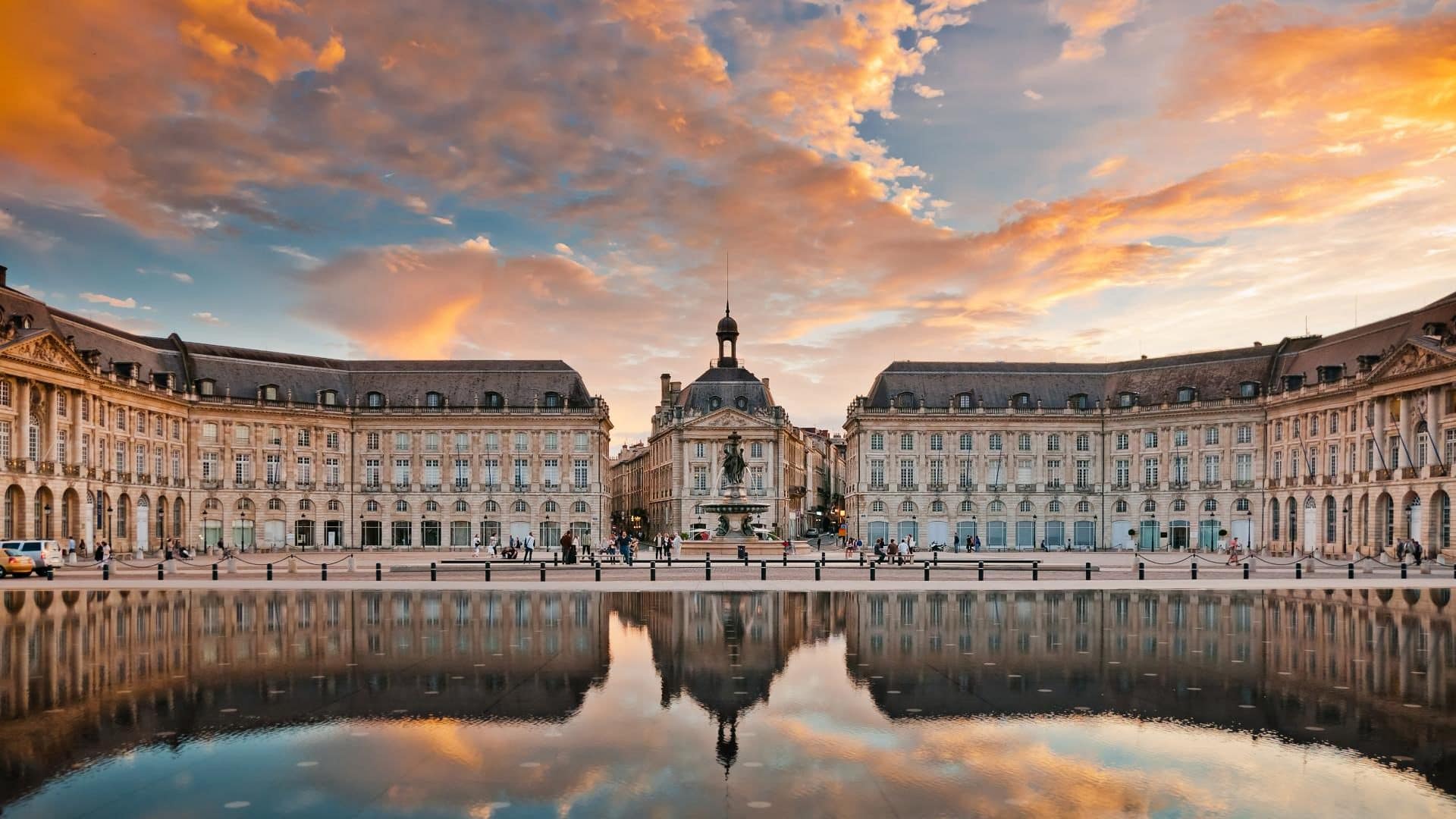Discover Bordeaux in Gironde
A sumptuous tour of private mansions, imposing residences, monumental gates and programmed facades, demonstrating the scale of the great project undertaken by Intendant Tourny and his successors in the 18th century.
Bordeaux, the pearl of southwest France, is a dynamic, historic city renowned for its architecture, exquisite wines and elegant atmosphere. With the Garonne River running through it, the city’s renovated quays are home to splendid 18th-century architecture. The Place de la Bourse, with its water mirror, is emblematic.
Bordeaux is also the heart of one of the world’s most prestigious wine-growing regions, home to estates such as Château Margaux. The cobbled streets of old Bordeaux reveal architectural treasures, including Saint-Michel Basilica and Saint-André Cathedral. Museums, such as the Musée d’Aquitaine, illustrate the region’s rich history. Bordeaux also offers a vibrant gastronomic scene, with markets, traditional brasseries and Michelin-starred restaurants.
The city combines tradition and modernity, with lively districts such as Darwin Eco-Système and La Cité du Vin, dedicated to wine heritage. Bordeaux, a UNESCO World Heritage Site, seduces visitors with its timeless charm and central role in the world’s wine culture.
Bordeaux and itsheritage
- 1- Grand Théâtre
Along with the Grand Théâtre, the Cours du Chapeau-Rouge is clearly the most “royal” thoroughfare on this circuit, where the neo-classical canons of architecture are on display. - 2- Place de la Bourse
Opening onto the river, Place de la Bourse was Bordeaux’s first major urban development project in the 18th century. - 3- Porte Cailhau
Continue along the quays to Porte Cailhau, a Renaissance triumphal arch built in 1494 to the glory of King Charles VIII. - 4- Grosse Cloche
The highlight of the tour, the Grosse Cloche symbolizes the city’s authority and arms in medieval times. - 5- Tour Pey-Berland
Free from traffic, Saint André Cathedral and Tour Pey-Berland, two of the city’s most complex monuments, form a particularly attractive ensemble. - 6- Palais Rohan
Heading up towards Place Gambetta, we leave the former archiepiscopal palace on the left, the Palais Rohan, set between courtyard and garden, which became the Town Hall in 1835.





